Sydney Opera House: Environmental Sustainability Stakeholder Analysis
VerifiedAdded on 2022/08/24
|11
|796
|17
Report
AI Summary
This report examines the sustainability initiatives of the Sydney Opera House, focusing on stakeholder analysis, environmental policies, and implementation plans. The analysis covers the Opera House's strategies for minimizing its carbon footprint, recycling plastic, and managing energy consumption. The report highlights the Opera House's commitments to environmental sustainability, including certifications like ISO 20121 and the practice of recycling ocean water. It also reviews the Opera House's strategic plan, which includes objectives like reducing energy use, ensuring environmental sustainability, and engaging in activities that help save the environment. The report further identifies shortfalls in the plan, such as a lack of financial planning and weak marketing, and outlines the responsibilities of employees in implementing the sustainability plan. The report concludes with a list of references used in the analysis.
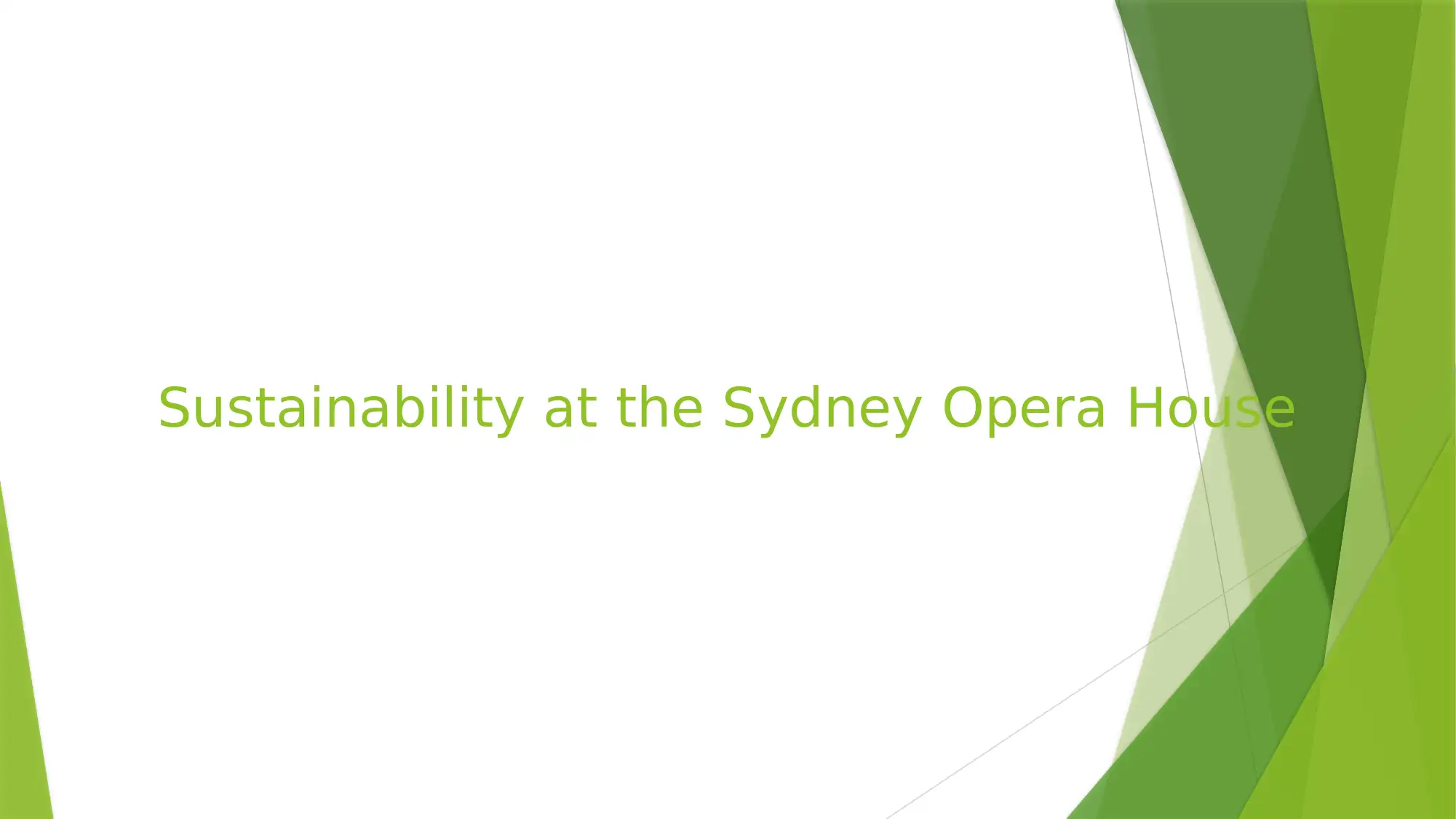
Sustainability at the Sydney Opera House
Paraphrase This Document
Need a fresh take? Get an instant paraphrase of this document with our AI Paraphraser
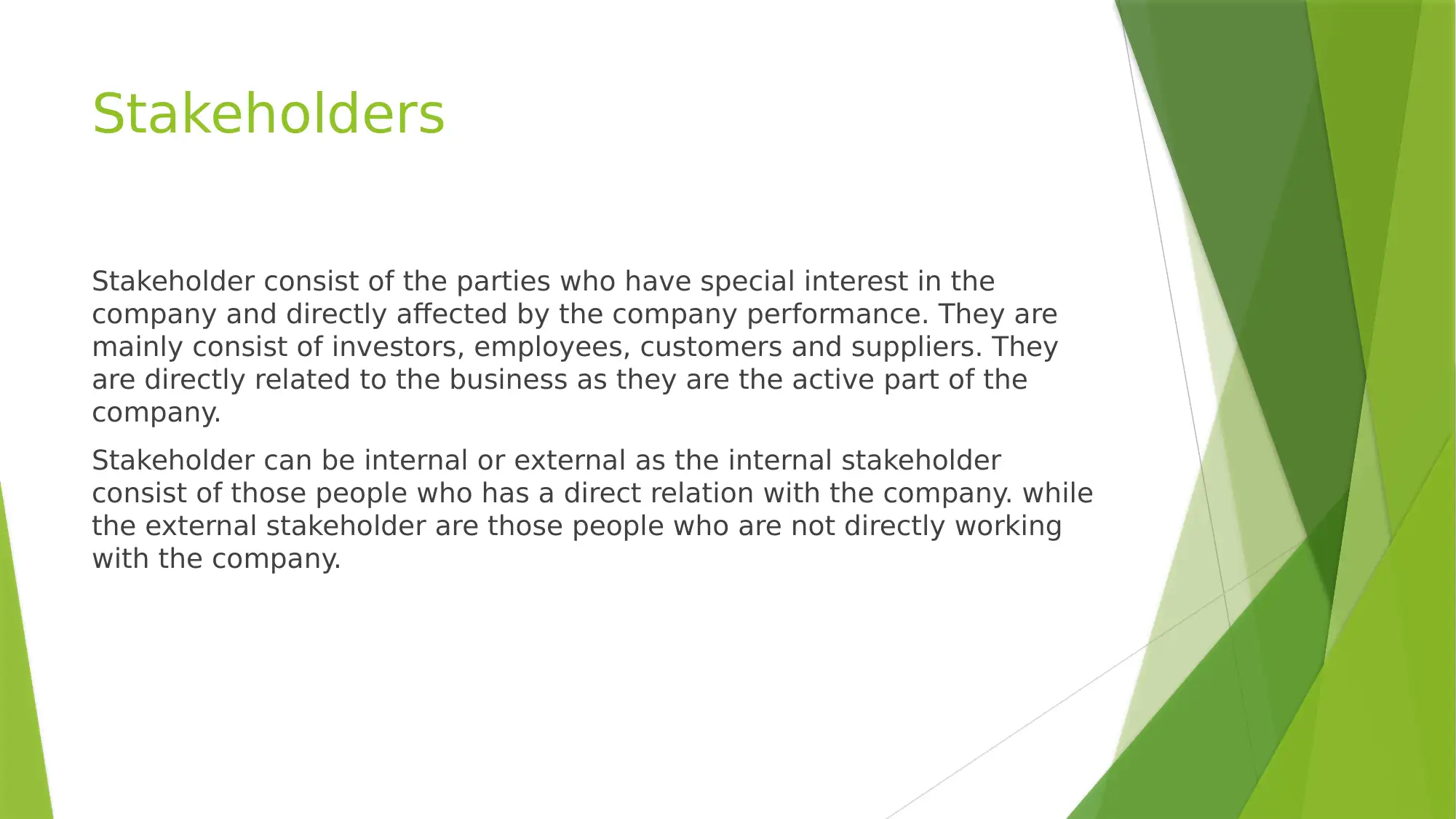
Stakeholders
Stakeholder consist of the parties who have special interest in the
company and directly affected by the company performance. They are
mainly consist of investors, employees, customers and suppliers. They
are directly related to the business as they are the active part of the
company.
Stakeholder can be internal or external as the internal stakeholder
consist of those people who has a direct relation with the company. while
the external stakeholder are those people who are not directly working
with the company.
Stakeholder consist of the parties who have special interest in the
company and directly affected by the company performance. They are
mainly consist of investors, employees, customers and suppliers. They
are directly related to the business as they are the active part of the
company.
Stakeholder can be internal or external as the internal stakeholder
consist of those people who has a direct relation with the company. while
the external stakeholder are those people who are not directly working
with the company.
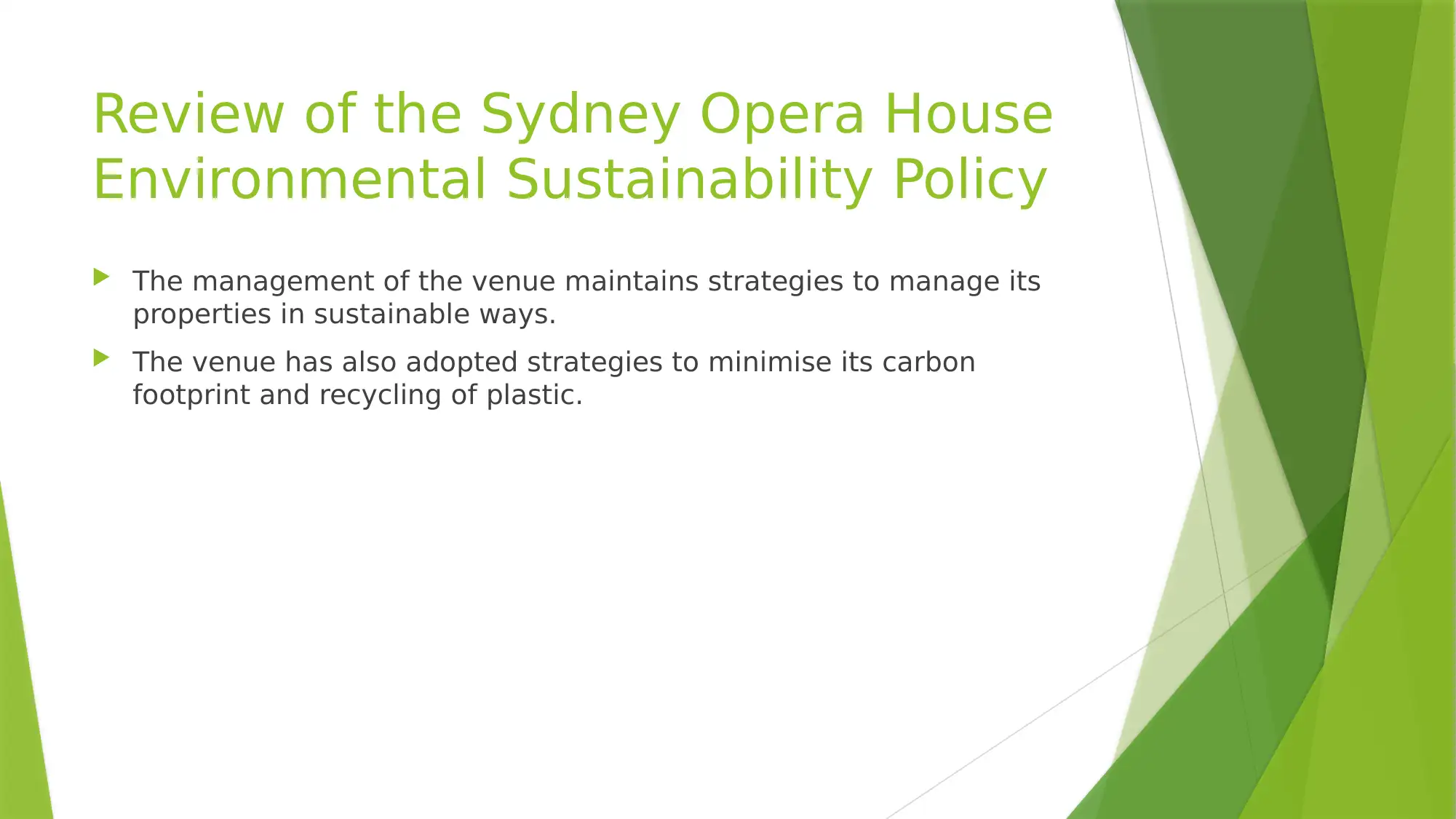
Review of the Sydney Opera House
Environmental Sustainability Policy
The management of the venue maintains strategies to manage its
properties in sustainable ways.
The venue has also adopted strategies to minimise its carbon
footprint and recycling of plastic.
Environmental Sustainability Policy
The management of the venue maintains strategies to manage its
properties in sustainable ways.
The venue has also adopted strategies to minimise its carbon
footprint and recycling of plastic.
⊘ This is a preview!⊘
Do you want full access?
Subscribe today to unlock all pages.

Trusted by 1+ million students worldwide
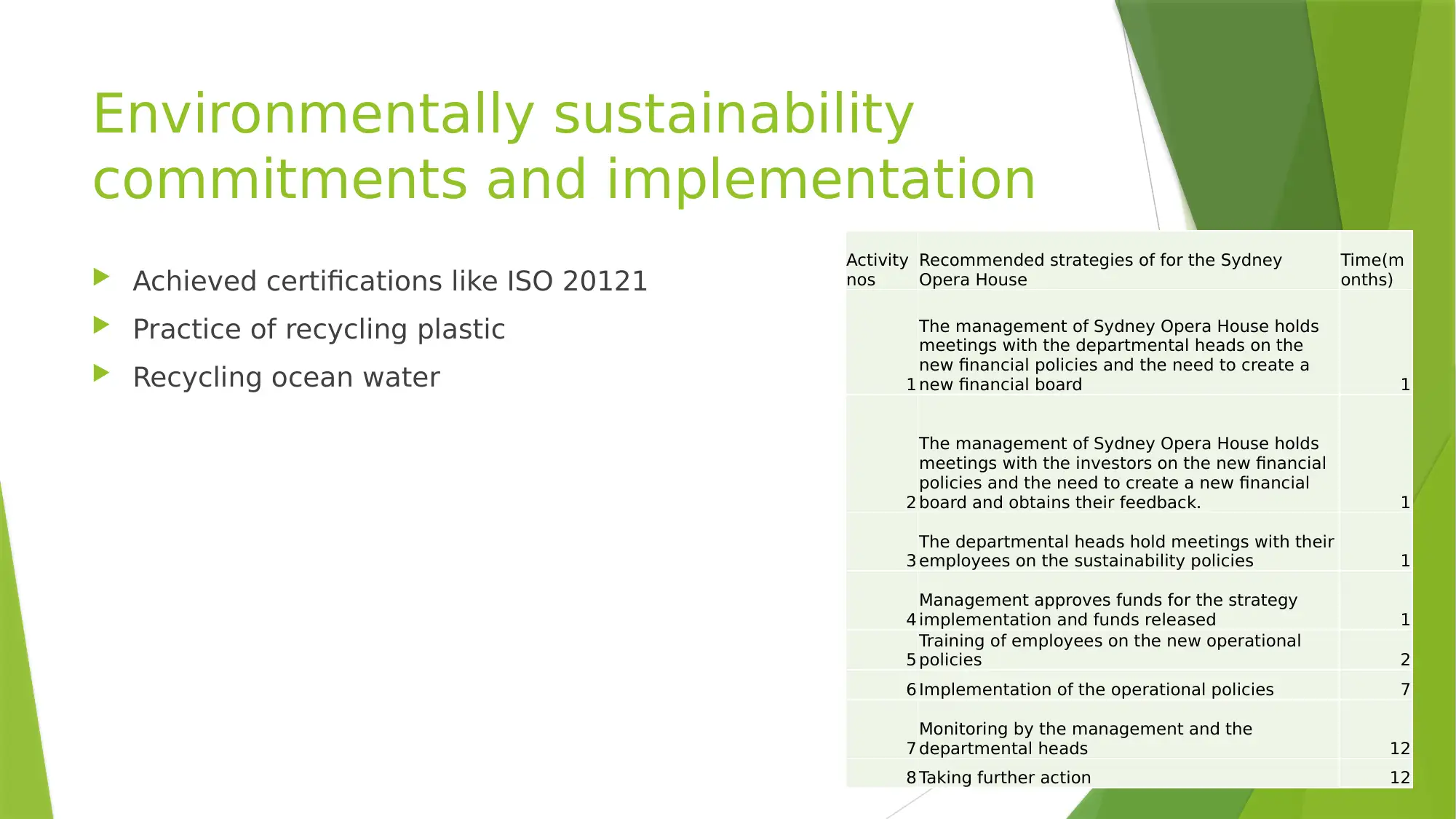
Environmentally sustainability
commitments and implementation
Achieved certifications like ISO 20121
Practice of recycling plastic
Recycling ocean water
Activity
nos
Recommended strategies of for the Sydney
Opera House
Time(m
onths)
1
The management of Sydney Opera House holds
meetings with the departmental heads on the
new financial policies and the need to create a
new financial board 1
2
The management of Sydney Opera House holds
meetings with the investors on the new financial
policies and the need to create a new financial
board and obtains their feedback. 1
3
The departmental heads hold meetings with their
employees on the sustainability policies 1
4
Management approves funds for the strategy
implementation and funds released 1
5
Training of employees on the new operational
policies 2
6 Implementation of the operational policies 7
7
Monitoring by the management and the
departmental heads 12
8 Taking further action 12
commitments and implementation
Achieved certifications like ISO 20121
Practice of recycling plastic
Recycling ocean water
Activity
nos
Recommended strategies of for the Sydney
Opera House
Time(m
onths)
1
The management of Sydney Opera House holds
meetings with the departmental heads on the
new financial policies and the need to create a
new financial board 1
2
The management of Sydney Opera House holds
meetings with the investors on the new financial
policies and the need to create a new financial
board and obtains their feedback. 1
3
The departmental heads hold meetings with their
employees on the sustainability policies 1
4
Management approves funds for the strategy
implementation and funds released 1
5
Training of employees on the new operational
policies 2
6 Implementation of the operational policies 7
7
Monitoring by the management and the
departmental heads 12
8 Taking further action 12
Paraphrase This Document
Need a fresh take? Get an instant paraphrase of this document with our AI Paraphraser

Strategic Plan
There are some objectives that the management has are described
below:
Reduction of energy use.
Sustainability of environment.
Recording the accurate records.
Engaging in various activities that help to save the environment.
There are some objectives that the management has are described
below:
Reduction of energy use.
Sustainability of environment.
Recording the accurate records.
Engaging in various activities that help to save the environment.
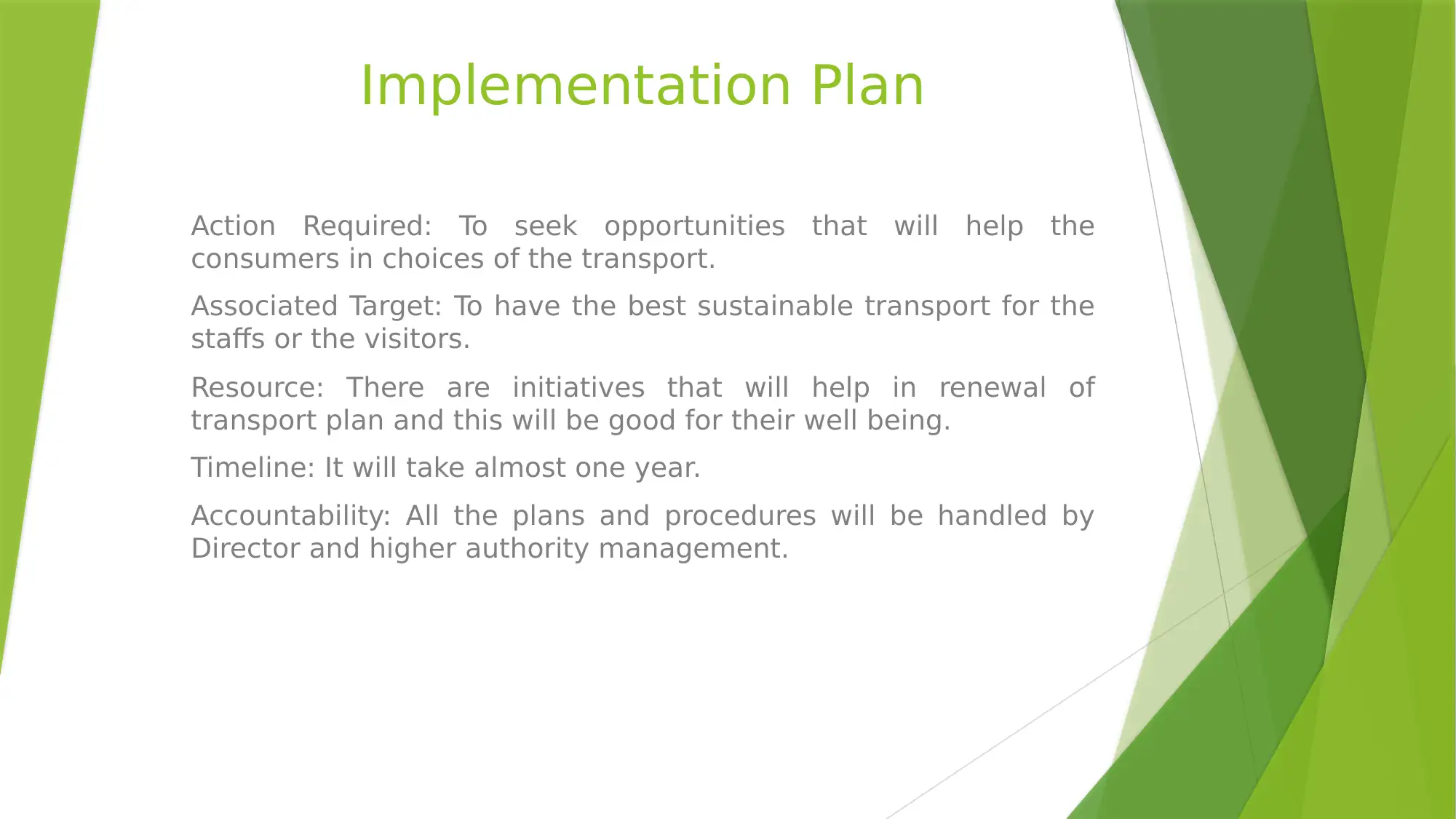
Implementation Plan
Action Required: To seek opportunities that will help the
consumers in choices of the transport.
Associated Target: To have the best sustainable transport for the
staffs or the visitors.
Resource: There are initiatives that will help in renewal of
transport plan and this will be good for their well being.
Timeline: It will take almost one year.
Accountability: All the plans and procedures will be handled by
Director and higher authority management.
Action Required: To seek opportunities that will help the
consumers in choices of the transport.
Associated Target: To have the best sustainable transport for the
staffs or the visitors.
Resource: There are initiatives that will help in renewal of
transport plan and this will be good for their well being.
Timeline: It will take almost one year.
Accountability: All the plans and procedures will be handled by
Director and higher authority management.
⊘ This is a preview!⊘
Do you want full access?
Subscribe today to unlock all pages.

Trusted by 1+ million students worldwide
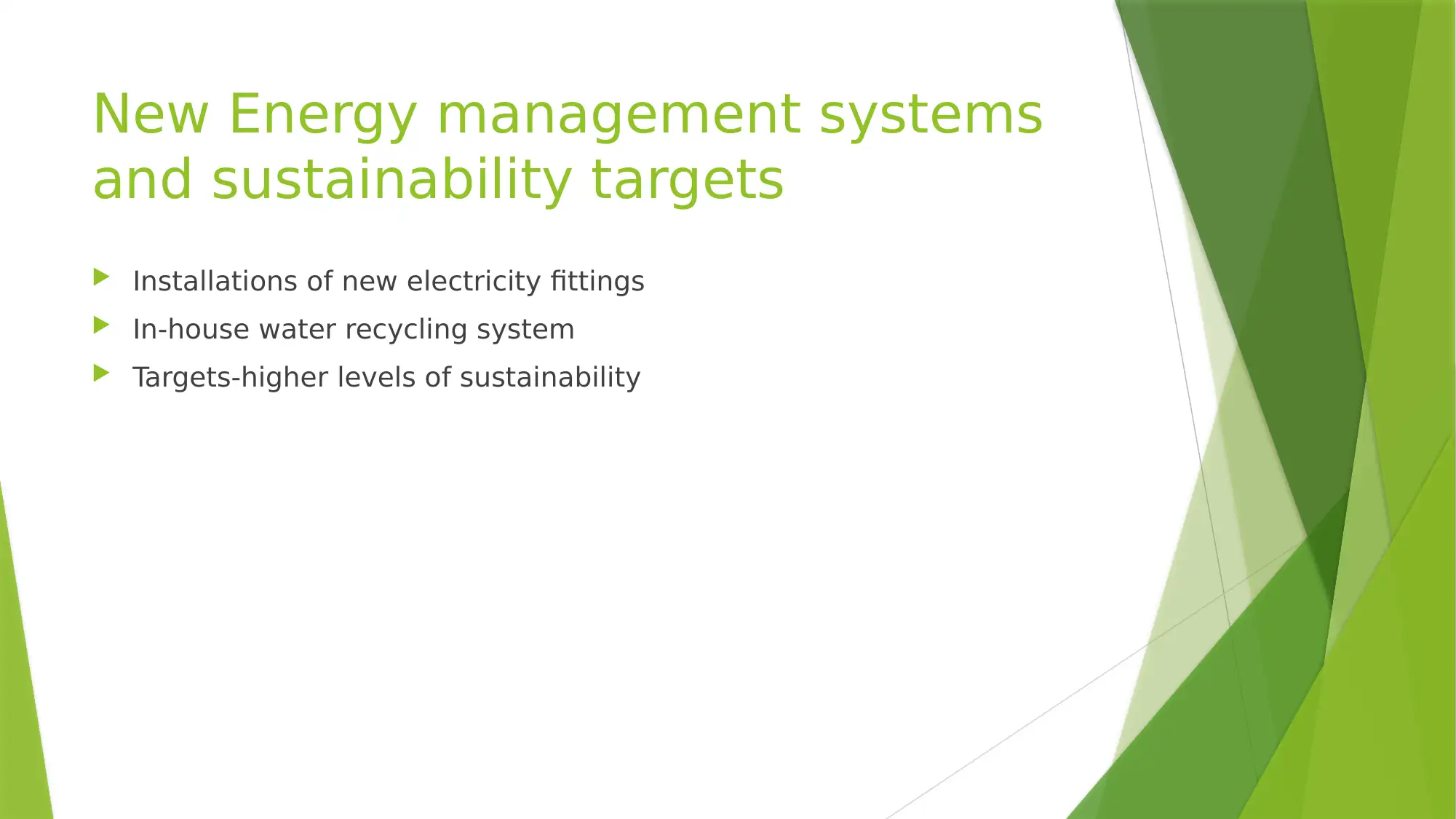
New Energy management systems
and sustainability targets
Installations of new electricity fittings
In-house water recycling system
Targets-higher levels of sustainability
and sustainability targets
Installations of new electricity fittings
In-house water recycling system
Targets-higher levels of sustainability
Paraphrase This Document
Need a fresh take? Get an instant paraphrase of this document with our AI Paraphraser
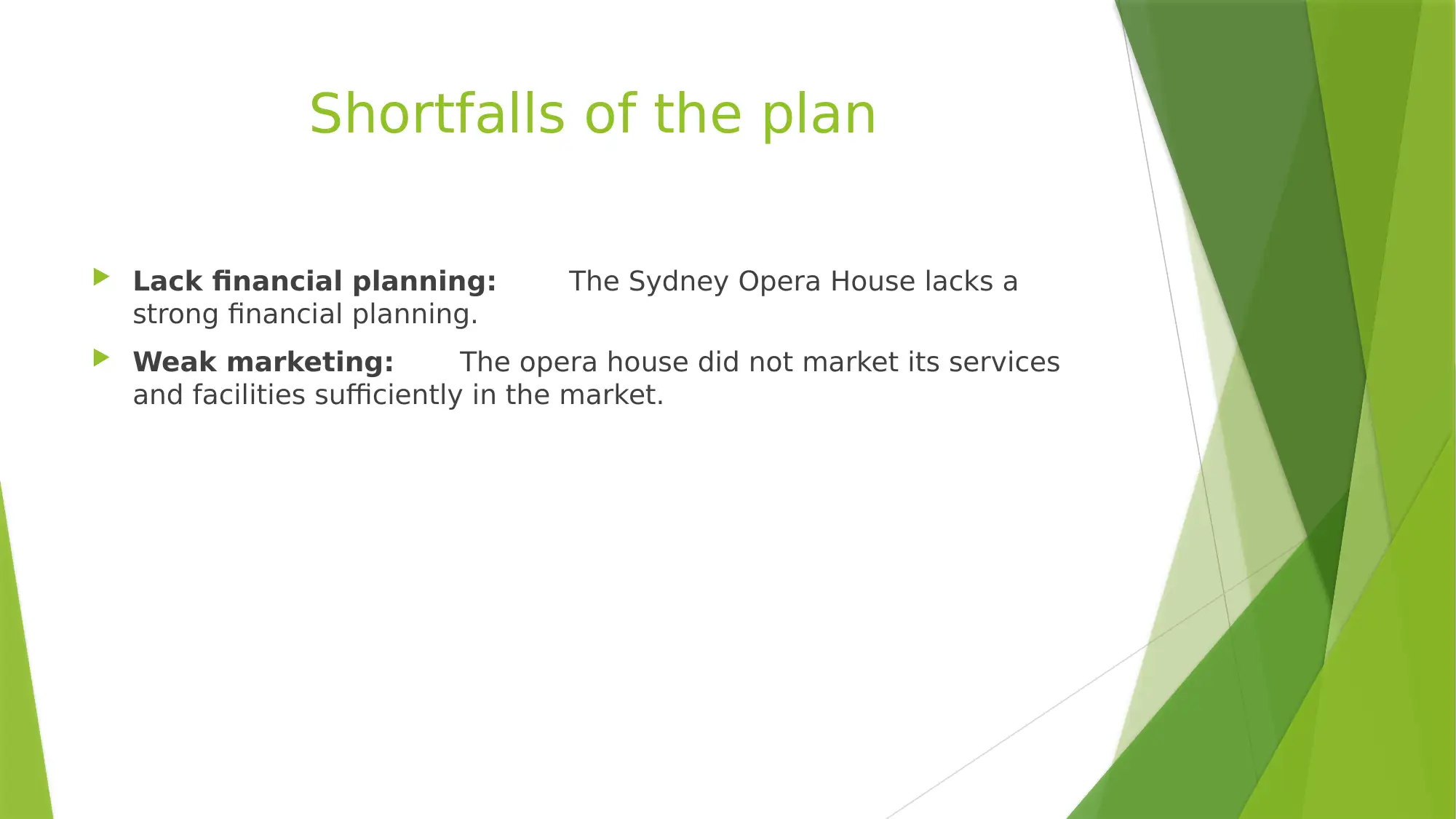
Shortfalls of the plan
Lack financial planning: The Sydney Opera House lacks a
strong financial planning.
Weak marketing: The opera house did not market its services
and facilities sufficiently in the market.
Lack financial planning: The Sydney Opera House lacks a
strong financial planning.
Weak marketing: The opera house did not market its services
and facilities sufficiently in the market.

Responsibility of employees
Individual employees would report to the departmental heads and be
responsible for implementation of the plan.
The teams or departments would be responsible for coordinating with
each other in the implementation of the plan.
One can suggest that the departmental heads should obtain
employee participation while assigning responsibilities
Individual employees would report to the departmental heads and be
responsible for implementation of the plan.
The teams or departments would be responsible for coordinating with
each other in the implementation of the plan.
One can suggest that the departmental heads should obtain
employee participation while assigning responsibilities
⊘ This is a preview!⊘
Do you want full access?
Subscribe today to unlock all pages.

Trusted by 1+ million students worldwide
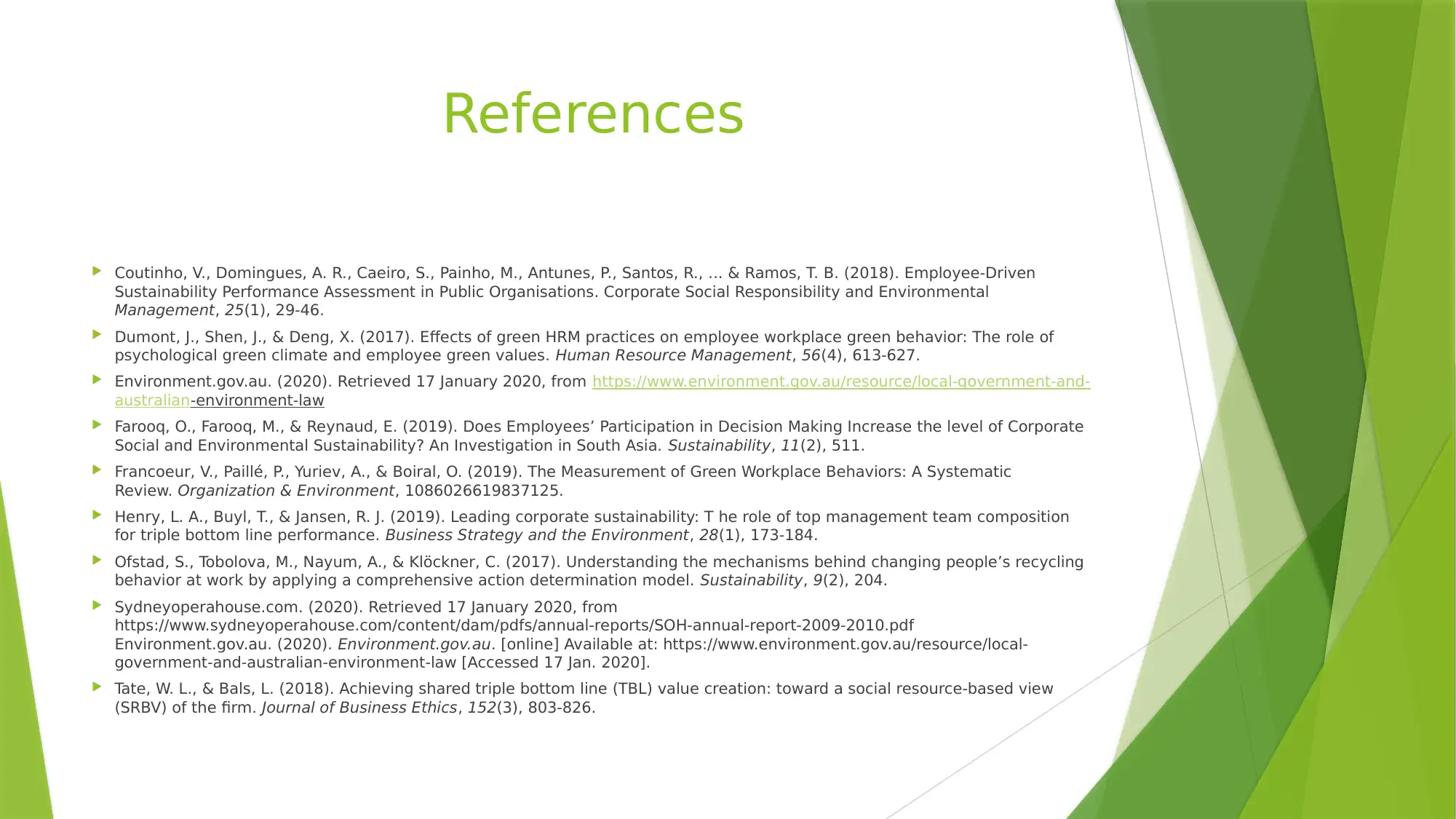
References
Coutinho, V., Domingues, A. R., Caeiro, S., Painho, M., Antunes, P., Santos, R., ... & Ramos, T. B. (2018). Employee‐Driven
Sustainability Performance Assessment in Public Organisations. Corporate Social Responsibility and Environmental
Management, 25(1), 29-46.
Dumont, J., Shen, J., & Deng, X. (2017). Effects of green HRM practices on employee workplace green behavior: The role of
psychological green climate and employee green values. Human Resource Management, 56(4), 613-627.
Environment.gov.au. (2020). Retrieved 17 January 2020, from https://www.environment.gov.au/resource/local-government-and-
australian-environment-law
Farooq, O., Farooq, M., & Reynaud, E. (2019). Does Employees’ Participation in Decision Making Increase the level of Corporate
Social and Environmental Sustainability? An Investigation in South Asia. Sustainability, 11(2), 511.
Francoeur, V., Paillé, P., Yuriev, A., & Boiral, O. (2019). The Measurement of Green Workplace Behaviors: A Systematic
Review. Organization & Environment, 1086026619837125.
Henry, L. A., Buyl, T., & Jansen, R. J. (2019). Leading corporate sustainability: T he role of top management team composition
for triple bottom line performance. Business Strategy and the Environment, 28(1), 173-184.
Ofstad, S., Tobolova, M., Nayum, A., & Klöckner, C. (2017). Understanding the mechanisms behind changing people’s recycling
behavior at work by applying a comprehensive action determination model. Sustainability, 9(2), 204.
Sydneyoperahouse.com. (2020). Retrieved 17 January 2020, from
https://www.sydneyoperahouse.com/content/dam/pdfs/annual-reports/SOH-annual-report-2009-2010.pdf
Environment.gov.au. (2020). Environment.gov.au. [online] Available at: https://www.environment.gov.au/resource/local-
government-and-australian-environment-law [Accessed 17 Jan. 2020].
Tate, W. L., & Bals, L. (2018). Achieving shared triple bottom line (TBL) value creation: toward a social resource-based view
(SRBV) of the firm. Journal of Business Ethics, 152(3), 803-826.
Coutinho, V., Domingues, A. R., Caeiro, S., Painho, M., Antunes, P., Santos, R., ... & Ramos, T. B. (2018). Employee‐Driven
Sustainability Performance Assessment in Public Organisations. Corporate Social Responsibility and Environmental
Management, 25(1), 29-46.
Dumont, J., Shen, J., & Deng, X. (2017). Effects of green HRM practices on employee workplace green behavior: The role of
psychological green climate and employee green values. Human Resource Management, 56(4), 613-627.
Environment.gov.au. (2020). Retrieved 17 January 2020, from https://www.environment.gov.au/resource/local-government-and-
australian-environment-law
Farooq, O., Farooq, M., & Reynaud, E. (2019). Does Employees’ Participation in Decision Making Increase the level of Corporate
Social and Environmental Sustainability? An Investigation in South Asia. Sustainability, 11(2), 511.
Francoeur, V., Paillé, P., Yuriev, A., & Boiral, O. (2019). The Measurement of Green Workplace Behaviors: A Systematic
Review. Organization & Environment, 1086026619837125.
Henry, L. A., Buyl, T., & Jansen, R. J. (2019). Leading corporate sustainability: T he role of top management team composition
for triple bottom line performance. Business Strategy and the Environment, 28(1), 173-184.
Ofstad, S., Tobolova, M., Nayum, A., & Klöckner, C. (2017). Understanding the mechanisms behind changing people’s recycling
behavior at work by applying a comprehensive action determination model. Sustainability, 9(2), 204.
Sydneyoperahouse.com. (2020). Retrieved 17 January 2020, from
https://www.sydneyoperahouse.com/content/dam/pdfs/annual-reports/SOH-annual-report-2009-2010.pdf
Environment.gov.au. (2020). Environment.gov.au. [online] Available at: https://www.environment.gov.au/resource/local-
government-and-australian-environment-law [Accessed 17 Jan. 2020].
Tate, W. L., & Bals, L. (2018). Achieving shared triple bottom line (TBL) value creation: toward a social resource-based view
(SRBV) of the firm. Journal of Business Ethics, 152(3), 803-826.
Paraphrase This Document
Need a fresh take? Get an instant paraphrase of this document with our AI Paraphraser

Thank You
1 out of 11
Related Documents
Your All-in-One AI-Powered Toolkit for Academic Success.
+13062052269
info@desklib.com
Available 24*7 on WhatsApp / Email
![[object Object]](/_next/static/media/star-bottom.7253800d.svg)
Unlock your academic potential
Copyright © 2020–2025 A2Z Services. All Rights Reserved. Developed and managed by ZUCOL.





